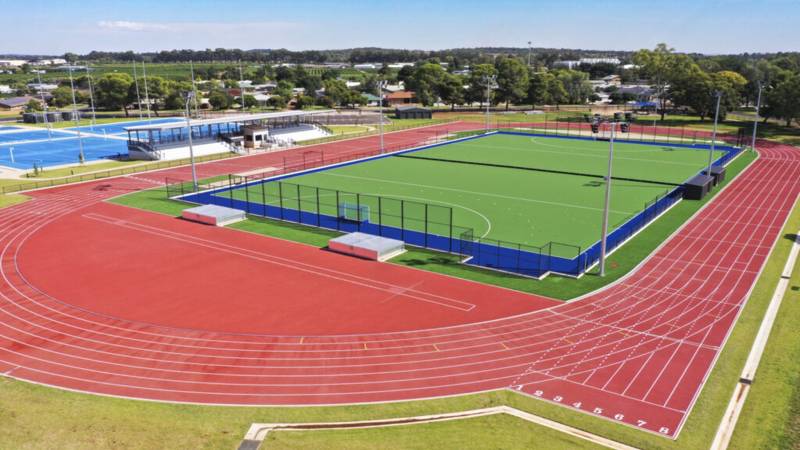
My first visit to Griffith in the Australian state of NSW was in 2007. Since then, I have lived here for a cumulative five years over seven visits, and have come to regard it as my second home. Griffith is a friendly town where the main economic activity is farming, and farm related industries and businesses. The area is called Wiradjuri country after the name of the main Aboriginal tribes, or, in the current politically correct term, the ‘first-nation’ tribes, who inhabited this land before the arrival of the British colonisers. The town was established in 1916 when the construction of a canal facilitated irrigation of this arid land.
The town has only one shopping street, a two-kilometre-long stretch of a wide road with restaurants, pharmacies, cafes, footwear outlets, clothes sellers, grocers, electronics stores, Indian groceries, banks, and everything else that ordinary households need. There is a side parallel street containing two shopping malls and some service-oriented workplaces. As in all other cities and towns of Australia, it has clubs, three of them here: to provide bar, accommodation, restaurant and gaming facilities. The Exies Club, basically for Ex-Servicemen of the Australian Defence Forces, but open to all for a very small membership fee, runs a full-spectrum club, a sports centre on a large playground, a motel, and dining and recreational facilities in its main club building. Another club, with similar facilities, is called Leagues Club. The third club is the Coro Club, that has a motel, a playground and the main club building with dining and gaming facilities. Even though the town is small, the clubs are crowded on weekends. Unlike Pakistan, where social gatherings are mostly men-only affair, the number of male and female patrons here is roughly the same.
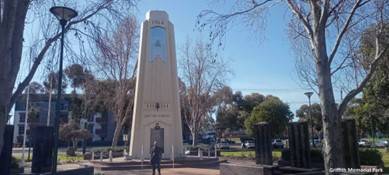
The town theatre is very active; hosting multiple plays, dances and musical events over many days every month. This author has had the opportunity of attending many such events, including Tchaikovsky’s Swan Lake. Ballets are a delight to watch and the one that performed here had a large troupe of dancers. There are many shows where school children perform music. I have attended some when my granddaughter played violin.
There is a large well-equipped public gymnasium maintained by the city council and a skateboarding rink next to the aquatic centre. In the Paris Olympics, two gold medals were won in skateboarding by Aussie players and several in swimming
Australians are a sport-loving nation – and a sports powerhouse. They excel in cricket, soccer, hockey, touch-ball, futsal, swimming, surfing, tennis, athletics, gymnastics, rugby, volleyball and some more. Their women teams are as good as of men. Not content with playing established sports, they invented two of their own; Australian Rule Football or, as is commonly called, Footie for men and Netball for women. The primary reason for this excellence is the keen interest they take in physical workouts. Their national players spend more time in the gymnasium than in the field. With healthy non-contaminated food, clean water and excellent air quality, it's common to find people in their 90s fit enough to live alone, drive around and keep an active social life. In the Paris Olympics this month, the Australian tally of medals (53) is behind only US and China whereas they won more gold medals than every nation except US, China and Japan. A remarkable feat given their small population.
This love for sport is reflected in this town too, which has a small population of only 27,000, yet supports many sporting facilities of all kinds; as in all other towns of Australia. The town has associations for rugby, cricket, soccer, touch-ball and netball.
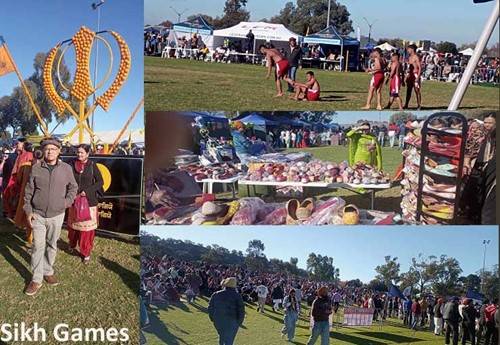
Griffith has a number of gymnasiums, some 24/7, and they all do great business. This author visited one for some time and found it full of people every time. The cardio-cycling class there was very strenuous, yet many ladies were performing better than some of the men.
The town has a public aquatic centre with four swimming pools; two of them Olympic size. All of them remain in heavy use. Before having a swimming pool in our own backyard, this author was a card-carrying member and a regular user of this mixed-sex pool; enjoying every bit of swimming there. One very shallow pool of calf depth here is dedicated for toddlers. Another smaller pool of uniform depth of about one meter is used for paid swimming classes. These classes, one per week for a three month course, are heavily booked; classes being from nine o’clock in the morning during holidays and in the afternoon from 1,500 hours for school days. One class is for half an hour and there are several running simultaneously, each with a separate instructor. The most sought-after time is immediately after school. The allocation of time at the beginning of each course is done early in the morning at about sunrise. Parents, mostly mothers, line up at the aquatic centre much before sunrise so that their two or three children get simultaneous or near simultaneous timings for ease of pick and drop. The swimming training is expensive at AUD 20 per class per child, yet they are normally overbooked.
There is a large well-equipped public gymnasium maintained by the city council and a skateboarding rink next to the aquatic centre. In the Paris Olympics, two gold medals were won in skateboarding by Aussie players and several in swimming.
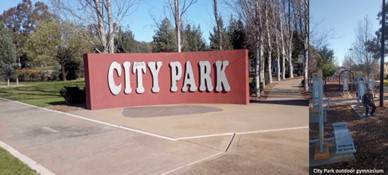
The town has a large number of playing fields. The one near our previous house was a large oval, named after Ted Scobie, an Australian boxer of mid-1950s. Located in the backdrop of a hill, the oval has grounds on three levels. Twice each week, it is sub divided into 10-12 fields, for soccer and touch-ball games, where school level teams play in league fashion. Attired in proper distinct outfits, each team playing under a dedicated coach with parents cheering on, it makes quite a spectacle. In the evenings, its walking track is crowded. Besides the regular school sports, as listed above, the Oval holds many other sporting events as given below.
Every year over the first weekend of June, which is a long weekend to celebrate the reigning Monarch’s birthday, the Sikh community holds International Shaheedi Games on this venue. It is a heavily attended event by Khalistani Sikhs from all over the world. Attired in the traditional bright coloured dresses and turbans, the environment gives a festive air. During these three days, the population of the town swells by 40%. The town people welcome the event due to the significant contribution to the local economy. Visitors come from as far away as New Zealand and Canada. All hotels and motels are booked to capacity on elevated rates. Eateries do a roaring business though the local Gurdwara provides free lunches to the attendees. This author has witnessed three of these events, including this year. The main contest over three days is the Punjabi sport of Kabaddi with a number of regional teams taking part. There is musical chairs contest for women. Cash prizes are given by the many wealthy Sikh businesses in Australia.
Ted Scobie Oval holds a weekly 5-kilomerer Parkrun event in the mornings of every Saturday. It is amazing to see people of all ages of both sexes rise early on a holiday only to do a collective run. Another running event is yearly marathon called ‘Half on the Hill’ because a part of the rout is over and around the background hill.
The Griffith Regional Sports Centre is a state-of-the art facility, refurbished recently at a cost of 32 million dollars with facilities for basketball, netball, hockey and athletics. A new building now features seven indoor basketball courts adaptable for netball, indoor hockey, badminton, wheelchair rugby and volleyball. It also has seating for over 1000 people, changing rooms, toilets, offices, meeting rooms, canteen and public amenities. Outside, the complex boasts seven all weather netball courts under lights and a grandstand to provide spectator space. In addition, there is synthetic athletics track and an artificial turf for hockey. The complex was inaugurated by the Prime Minister himself in October 2022.
The tennis complex has multiple hard and grass-top courts, where regional and state tennis matches are hosted. The most acclaimed tennis star of the town is Evonne Fay Goolagong Cawley. Born in Griffith of 1st-nation heritage, she went on to win numerous single, double and mixed-double grand slam titles in 1970s and 80s. The tennis court is adjacent to the large Jubilee Sports park that has multiple rugby fields and a set of basketball courts. Then there is the half kilometre long and a quarter kilometre wide rectangular Exies Sports Club grounds which hosts cricketing pitch and nets. Various teams play here nearly every day in the evenings under floodlights. It also has a crochet grounds, which is ball game for the elderly.
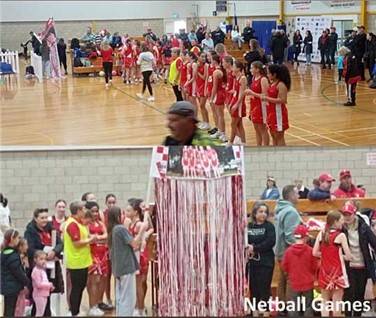
There is a large Show Ground, as in most Australian cities. These grounds host industrial exhibitions, car shows, agricultural equipment demonstrations, etc. Once or twice a year, there are shows by circus teams very similar to village or small-town fairs in Pakistan. Witnessing one of the shows, this author was reminded of ‘mela mandi’ in Sargodha.
There are various other well-maintained recreational parks. The most frequented of these is the Memorial Park on the main street; dedicated to the remembrance of those who lost their lives in various wars that Australia has participated around the world, in defence, as they claim, of freedom but basically to support the British and the US wherever they have fought. Names of the fallen soldiers from this town are written on solemn black granite walls. Each year, the anniversary of the Gallipoli campaign is celebrated here with full honour. Nearly the whole of the town turns up to pay their respects for the large number of Australians who fell on that remote Turkish peninsula. Interacting with the locals, it is evident that while they honour their dead, there is no animosity against the Turks, who they think were worthy opponents defending their land. A sizeable Turkish migrant community also participates in the service. It's like the Defence Day of Pakistan. Many participating veterans proudly wear their medals on their jackets for the festivities. School children march on the designated route on the main street of the town in deference to the fallen.
Cricket is played on many fields in the town. Two of them have net facilities and lights for night games. Australian national cricketers Mark Taylor, Michael Slater and Jeff Lawson are from this town, as are women cricketing sisters Kate and Alex Blackwell.
As stated earlier, Griffith is a small town. It is as small, or perhaps smaller in population, as Pakistani towns like Swabi, Gujar Khan, Mian Chunnu, Sakrund, Digri (MPK) or Dera Bugti. It is hard to imagine the above described facilities in any of these towns. It’s not without a reason, therefore, that Australia produces many champions and holds sway in a number of sports. It is one of the leading medal winners in Olympics, Commonwealth and World games. A large number of sporting facilities in even small towns testifies to their zeal for the outdoors and competitive sports.

